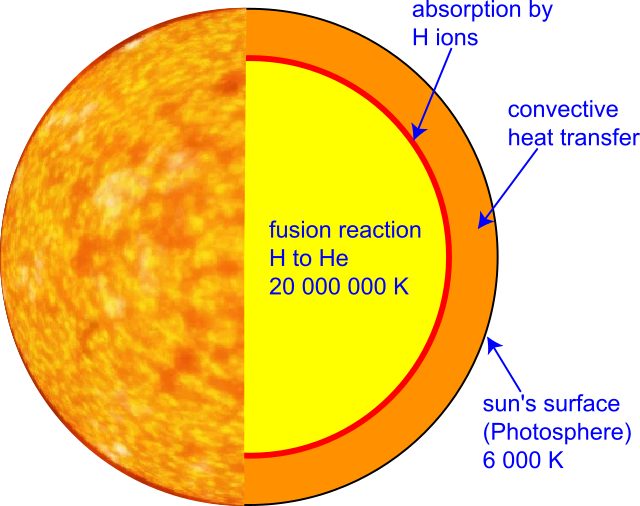Featured
- Get link
- X
- Other Apps
Surface Temperature of the Sun
The Sun, our nearest star, is a fascinating celestial object that emits light and heat, shaping life on Earth and providing us with valuable insights into stellar physics. In this article, we will explore the surface temperature and color of the Sun, understanding how they are related to its structure, composition, and energy production processes.
1. Surface Temperature of the Sun:
The Sun's surface temperature is a crucial characteristic that determines its appearance, energy output, and spectral properties. The Sun is a hot and dynamic ball of gas, primarily composed of hydrogen and helium, with a temperature that varies across different regions.
1.1. Photosphere:
The photosphere is the visible surface of the Sun, where most of its light is emitted. It has an average temperature of about 5,500 degrees Celsius (9,932 degrees Fahrenheit). The temperature can vary slightly depending on the specific region and phenomena occurring, such as sunspots or solar flares.
1.2. Temperature Gradient:
As we move deeper into the Sun, away from the photosphere, the temperature increases significantly. The temperature rises due to the intense pressure and nuclear fusion reactions occurring in the Sun's core.
1.3. Core Temperature:
At the core of the Sun, where nuclear fusion takes place, temperatures reach an astonishing 15 million degrees Celsius (27 million degrees Fahrenheit). It is in this region that hydrogen atoms fuse together to form helium, releasing an enormous amount of energy in the process.
2. Color of the Sun:
The color of an object, including the Sun, is determined by the wavelengths of light it emits or reflects. The Sun's color appears white to the naked eye when observed from space or during a solar eclipse. However, it can appear yellow or reddish when observed from Earth's atmosphere due to scattering and absorption effects.
2.1. Black Body Radiation:
The Sun's color is closely related to its black body radiation, which describes the emission of electromagnetic radiation from a perfect absorber and emitter of energy. The Sun's temperature determines the distribution of this radiation across different wavelengths.
2.2. Wien's Law:
According to Wien's law, hotter objects emit more energy at shorter wavelengths. As the Sun's surface temperature is around 5,500 degrees Celsius, it emits most of its radiation in the visible spectrum, with a peak intensity in the yellow-green region.
2.3. Color Perception:
The perception of the Sun's color can be influenced by atmospheric conditions, including scattering and absorption of light. When observed from Earth's atmosphere, the Sun appears slightly yellow due to the scattering of shorter-wavelength blue and violet light by the atmosphere.
3. Spectral Classification:
In addition to its color, the Sun's surface temperature is also reflected in its spectral classification. Astronomers classify stars based on their spectral types, which are determined by the presence of specific absorption lines in their spectra.
3.1. Sun's Spectral Type:
The Sun is classified as a G-type main-sequence star. Its spectral type is G2V, indicating that it falls within the G-type category and is a main-sequence (or dwarf) star. The "V" designation signifies that the Sun is in the main phase of its stellar evolution.
3.2. Color and Spectral Type Relationship:
The Sun's surface temperature, which determines its color, is directly related to its spectral classification. G-type stars like the Sun typically have surface temperatures ranging from 5,000 to 6,000 degrees Celsius (9,000 to 10,800 degrees Fahrenheit).
4. Solar Colors and Observations:
When observing the Sun directly using proper solar filters, it appears white or slightly yellowish. However, during certain astronomical phenomena such as sunrise or sunset, the Sun can appear red or orange due to the scattering of shorter-wavelength light by the Earth's atmosphere.
5. Conclusion:
The Sun's surface temperature and color are interconnected and provide valuable insights into its structure, energy production processes, and spectral classification. Understanding these aspects enhances our knowledge of stellar physics and allows us to appreciate the Sun's role as the powerhouse of our solar system. From its white appearance in space to its yellowish hue when observed from Earth, the Sun's temperature and color showcase the diverse and dynamic nature of this celestial body.
- Get link
- X
- Other Apps
Popular Posts
Exploration of Moons, Asteroids, and Comets
- Get link
- X
- Other Apps

Comments
Post a Comment